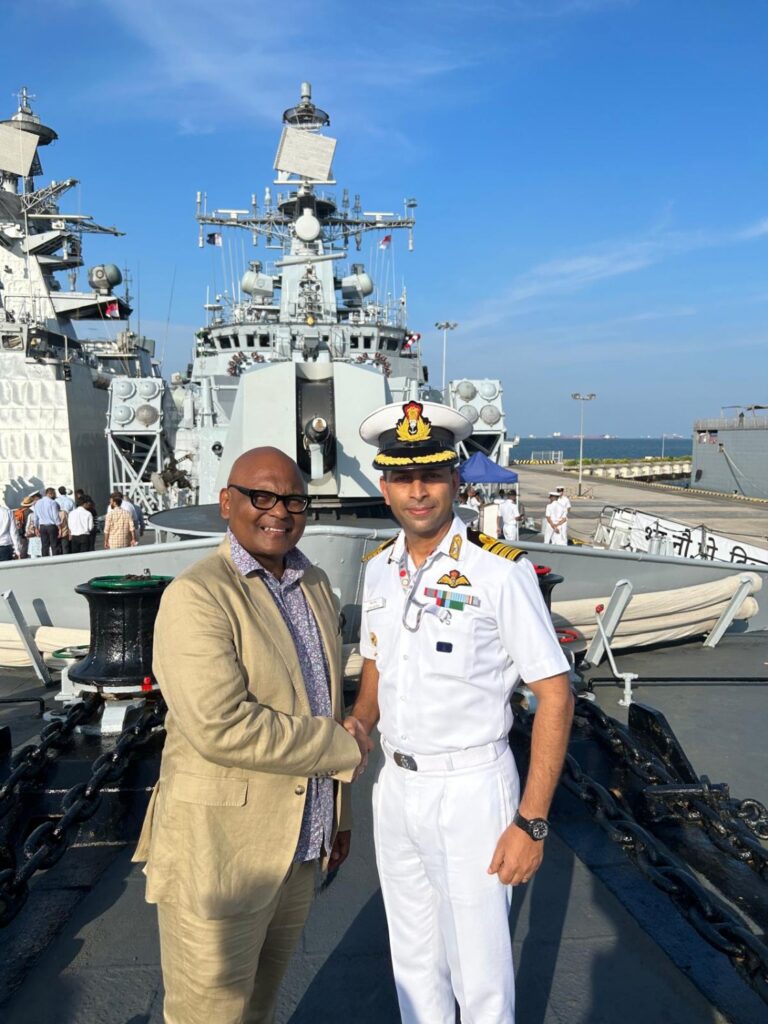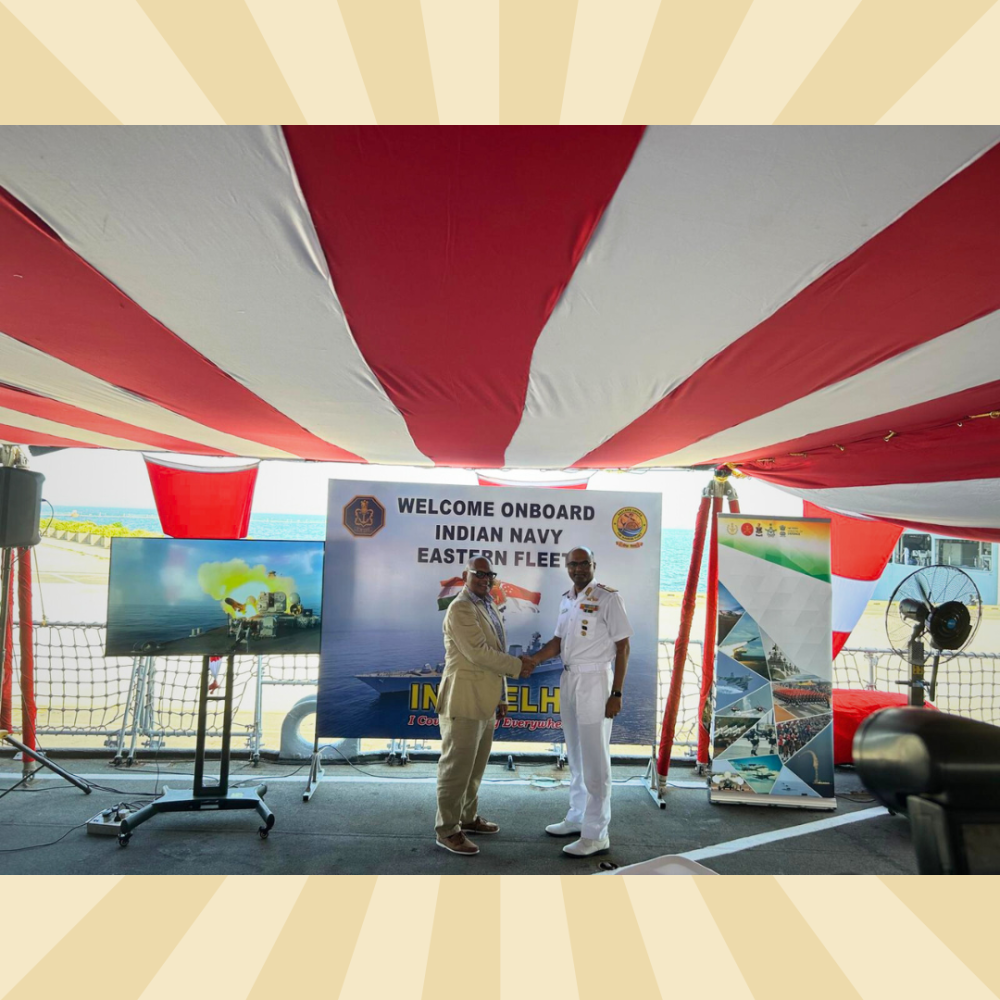I was delighted to visit India’s first modern destroyer built in an Indian dockyard and meet its commanding officer Captain Cyril Mathew. A smart and a far reaching leader, Captain Mathew commands INS Delhi, the lead ship of her class of guided-missile destroyers of the Indian Navy.
Built at the Mazagon Dock Limited in Mumbai and commissioned on 15 November 1997, this class is among the largest warships to be designed and built in India.
INS Delhi is the second vessel of the Indian Navy to bear the name. She inherits the mantle from the Leander-class cruiser of the same name, HMS Achilles of Battle of the River Plate fame. The Battle of the River Plate is the Allies’ first major naval engagement and victory of World War II on December 13, 1939, in the South Atlantic. I took a photo of the plaque with the battles.

As a part of its strategy to indigenise and upgrade, India invested in several weapons and sensors. The Kh-35E Uran missiles has been replaced by BrahMos missiles, which was originally sanctioned in 2015. Designated as PJ-10, BrahMos is a long-range, ramjet-powered supersonic cruise missile that can be launched from submarines, ships, fighter aircraft or TEL. A joint venture between the Indian Defence Research and Development Organisation (DRDO) and the Russian Federation’s NPO Mashinostroyeniya, they formed BrahMos Aerospace. The Shtil-1 air defence system will replace the 9K-90 Uragan, with Fregat M2EM radar replacing the Fregat-MAE. The Kite Screech fire control system of the AK-100 is being replaced by BEL Lynx U2. The electronics warfare system will be upgraded to Ellora Mk II, with Kavach decoy launchers. Atlas Elektronik ACTAS towed-array sonar will also be installed. The BrahMos integration was validated with a test firing on 19 April 2022.
On 6 May 2024, the Indian flotilla reached #Singapore for a three day visit as a part of operational deployment of the Navy’s Eastern Fleet to the South China Sea.
On the bridge of #INSDelhi, I also met with INS Delhi Executive Officer, Grandhi Anvesh Murty who is the second-in-command to the commanding officer. He explained the shift in navigation using the stars to charts to electronics.

After the American, Russian and Chinese navies, Indian Navy is ranked the world’s fourth largest navy.
Indian Ocean: the center of gravity of geopolitics in the 21st century.
I was also delighted to meet with Flag Officer Commanding Eastern Fleet of Indian Navy Rear Admiral Susheel Menon. A brilliant officer, Admiral Menon was educated at a prestigious naval institution – the U.S. Naval War College, Newport, Rhode Island, where I had the privilege of visiting and delivering a guest lecture.

Under Admiral Menon’s command was a destroyer, a frigate and a fleet support ship from the Eastern Fleet. Admiral Menon discussed India’s maritime mission and vision. In addition to initiatives and mechanisms for collaboration in the maritime domain, Indo-Pacific Oceans Initiative (IPOI), a cooperative framework launched by India at the East Asia Summit to promote cooperation for a free, open, and rules-based Indo-Pacific, particularly focusing on the Indian Ocean was discussed.
To me, the Indian Ocean Region is a strategic frontier. If there is geopolitical rivalry between India and China or the U.S. and China, it will ruin the peace of the Indian Ocean. Although my colleagues have argued that air power will determine India’s ability to counter China’s ambitions, let’s all start to look above the quest for supremacy. As I reflect on the region’s evolving dynamics, I urge India’s military and policymakers to think beyond modernising the Indian Air Force decisively, or risk ceding the Indian Ocean to China’s expanding influence.
My thinking is that China’s rise is inevitable. Before the 1962 border war, India and China were friends for 2500 years. Rather than confront, both the leaders of China and India, and even more importantly, the strategic thinkers of these two great nations should start to address their issues. This culture of confrontation and conflict is not eastern. If New Delhi and the Indians can practice what the Buddha taught them, India will be a pillar of strength to the US to better understand China.
India, China, US, Russia, the nations with the four greatest military forces, should work together to build a peaceful and a sustainable world. The window for action is narrowing, and India’s future as a regional leader depends on its response of working with China, Pakistan and even Bangladesh to build a harmonious world. Otherwise, the Indian Ocean will be the centre of gravity of geopolitics in the 21st century.
– Rohan Gunaratna